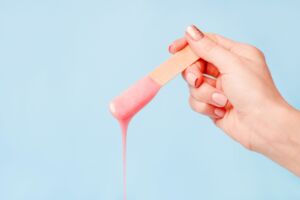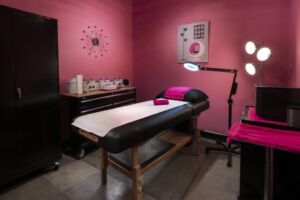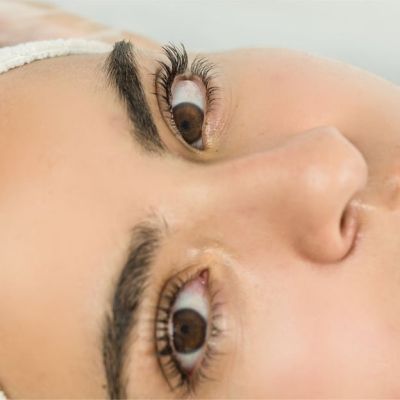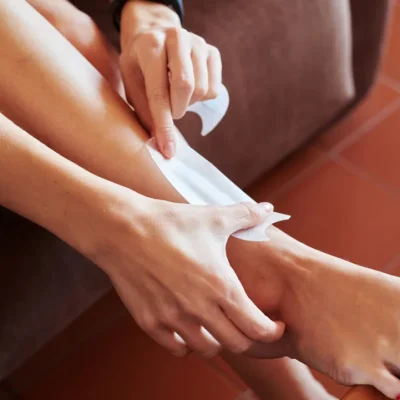Waxing is a popular hair removal method known for its effectiveness in providing smooth, hair-free skin. However, it’s not uncommon to experience skin irritation, redness, or sensitivity after a waxing session. Proper post-waxing care is essential to soothe the skin, promote healing, and minimize discomfort. In this guide, Diva Salon explores ten practical tips for healing skin irritation post-waxing. From using cold compresses and gentle moisturizers to avoiding sun exposure and tight clothing, these tips will help you navigate the aftermath of waxing with greater comfort and ease. Let’s delve into each tip to understand how to care for your skin after waxing effectively.
1. Apply Cold Compress
After waxing, it’s common to experience some level of skin irritation, redness, or inflammation. Applying a cold compress can be incredibly soothing and beneficial in reducing these symptoms. The cold temperature helps constrict blood vessels, which can reduce swelling and numb any discomfort.
To make a cold compress, you can use a few ice cubes wrapped in a clean cloth or a reusable gel pack. It’s essential to wrap the ice pack in a cloth to prevent direct contact with the skin, as extreme cold can cause frostbite or damage the skin. Apply the cold compress gently to the waxed area for about 10-15 minutes at a time. Take breaks in between to allow the skin to warm up before reapplying the compress.
Avoid leaving the cold compress on for too long, as prolonged exposure to cold can also have adverse effects on the skin. You can repeat this process a few times throughout the day, especially if you’re experiencing significant redness or swelling.
2. Avoid Hot Baths or Showers
Hot water can exacerbate skin irritation post-waxing, as it can strip away natural oils and further inflame the skin. Instead, opt for lukewarm or cool water when showering or bathing. Keep the water temperature comfortable but not too hot. Using a mild, fragrance-free cleanser can also help prevent additional irritation.
Avoid vigorous scrubbing or rubbing the waxed area with harsh loofahs or washcloths. Pat the skin dry gently with a soft towel instead of rubbing, as friction can irritate the sensitive skin further.
3. Moisturize
Proper moisturization is crucial for promoting healing and preventing dryness or flakiness after waxing. Choose a gentle, alcohol-free moisturizer that is suitable for sensitive skin. Look for ingredients like aloe vera, shea butter, or jojoba oil, known for their soothing and hydrating properties.
Apply the moisturizer to the waxed area after cleansing and patting the skin dry. Massage it gently into the skin using upward, circular motions until fully absorbed. Reapply the moisturizer as needed throughout the day to keep the skin hydrated and supple.
Avoid using heavy or greasy moisturizers that may clog pores or exacerbate irritation. Non-comedogenic formulas are ideal, as they won’t block pores and are less likely to cause breakouts.
4. Avoid Sun Exposure
Exposing freshly waxed skin to direct sunlight or tanning beds can lead to increased sensitivity, redness, and even sunburn. UV rays can also cause hyperpigmentation or darkening of the skin in the waxed area. It’s crucial to protect your skin by avoiding sun exposure for at least 24-48 hours post-waxing.
If you need to go outside, apply a broad-spectrum sunscreen with SPF 30 or higher to the waxed area. Choose a sunscreen specifically formulated for sensitive skin and reapply it every two hours or after swimming or sweating. Wearing protective clothing such as hats, sunglasses, and long sleeves can also provide added sun protection.
5. Avoid Tight Clothing
Wearing tight or restrictive clothing can contribute to friction and irritation on freshly waxed skin. Opt for loose-fitting, breathable clothing made from natural fibers like cotton or linen. These fabrics allow air circulation and reduce the risk of chafing or rubbing against the skin.
Avoid wearing tight jeans, leggings, or synthetic fabrics that can trap heat and moisture, leading to further irritation. If possible, wear clothing that doesn’t touch the waxed area directly to minimize friction and discomfort.
Choosing the right clothing can play a significant role in promoting comfort and allowing the skin to heal effectively after waxing for the special occasion.
6. Avoid Exfoliation
Exfoliation is a crucial part of skincare routines, but it’s essential to avoid it immediately after waxing to prevent further irritation or damage to the skin. Exfoliating products, such as scrubs, loofahs, or exfoliating gloves, can be too harsh for freshly waxed skin, which is already sensitive and may have small micro-tears from the hair removal process.
Wait at least 24-48 hours post-waxing before resuming any exfoliation routine. This allows the skin to recover and reduces the risk of irritation or inflammation. When you do start exfoliating again, choose gentle exfoliants specifically designed for sensitive skin and use them no more than once or twice a week to avoid over-exfoliation.
7. Use Aloe Vera Gel
Aloe vera is a natural ingredient known for its soothing and healing properties, making it an excellent choice for calming skin irritation after waxing. Pure aloe vera gel can help reduce redness, inflammation, and discomfort while promoting skin healing.
Ensure that the aloe vera gel you use is free from added fragrances, alcohol, or other potential irritants. Apply a thin layer of the gel to the waxed area and gently massage it into the skin until fully absorbed. You can reapply aloe vera gel several times a day as needed for continued relief.
For an extra cooling effect, you can refrigerate the aloe vera gel before applying it to the skin. This can provide additional relief from post-waxing heat or discomfort.
8. Avoid Touching the Area
It’s crucial to avoid touching or scratching the waxed area, especially with unwashed hands, as this can introduce bacteria and potentially lead to infections or further skin irritation. Keep the area clean and dry, and refrain from picking at any scabs or bumps that may form post-waxing.
If you need to apply skincare products or moisturizers to the waxed area, wash your hands thoroughly beforehand to reduce the risk of contamination. Use gentle, patting motions to apply products rather than rubbing or tugging at the skin.
By avoiding unnecessary touching or manipulation of the waxed skin, you can minimize the risk of complications and allow the skin to heal more effectively.
9. Take Over-the-Counter Pain Relievers
If you experience discomfort or mild pain after waxing, over-the-counter pain relievers such as ibuprofen (Advil, Motrin) or acetaminophen (Tylenol) can help alleviate symptoms. These medications can reduce inflammation and provide temporary relief from soreness or sensitivity in the waxed area.
Follow the dosage instructions on the medication packaging and consult with your healthcare provider if you have any underlying medical conditions or concerns about taking pain relievers. It’s essential to use these medications as directed and avoid exceeding the recommended dosage to prevent adverse effects.
Pairing pain relievers with other soothing measures, such as cold compresses or gentle skincare products, can enhance their effectiveness in managing post-waxing discomfort.
10. Consult a Professional
If you develop severe skin irritation, redness, swelling, or signs of infection such as pus, increased pain, or warmth in the waxed area, it’s crucial to seek medical attention promptly. A dermatologist or healthcare professional can evaluate the condition of your skin, provide appropriate treatment, and offer guidance on how to manage post-waxing complications effectively.
Do not attempt to treat severe skin reactions on your own, as improper care or delay in seeking medical help can worsen the situation. Follow any instructions or recommendations given by healthcare professionals when taking waxing appointments to ensure proper healing and minimize the risk of long-term skin damage.
Conclusion:
In conclusion, proper care and attention after waxing are crucial for maintaining healthy, smooth skin and minimizing post-waxing irritation. By following the ten tips outlined in this guide, you can effectively soothe your skin, promote healing, and reduce discomfort after a waxing session. Remember to apply cold compresses to reduce inflammation, avoid hot baths or showers to prevent further irritation, moisturize with gentle products to keep the skin hydrated, protect your skin from sun exposure, and wear loose clothing to avoid friction. Additionally, refrain from exfoliation immediately after waxing, use aloe vera gel for soothing relief, avoid touching the waxed area, consider using over-the-counter pain relievers if needed, and consult a professional if you experience severe skin reactions.




